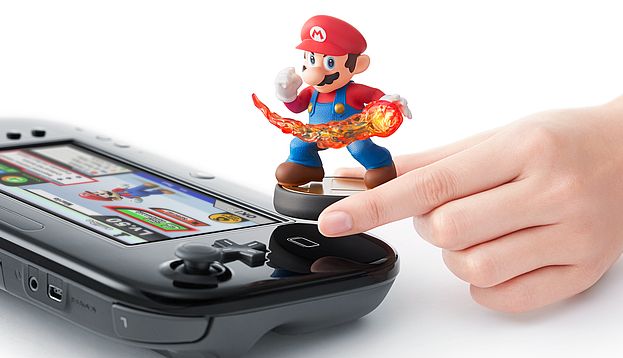Around this time last year, Nintendo was looking for answers when it came to game sales, after reporting a loss of $193 million with disappointing sales of its Wii U console. This year, however, things are quite a bit different, according to Bloomberg.
Thanks to the release of interactive Amiibo toys that work with the console, as well as hit games like Super Smash Bros. and Bayonetta 2, the company is headed towards its highest quarterly profit in years, with some analysts expecting triple the profit of last quarter at ¥36.8 billion, or nearly $300 million.
This is a good success story for the company, following the pressure from its competition (namely Sony’s PlayStation 4 and Microsoft’s Xbox One). And even though the Wii U hasn’t seen similar sales numbers just yet, it has seen a large increase in units sold, with nearly 3.6 million units flying off shelves this year as it doubles its installed base. SuperData expects the Wii U to end 2014 with 7.3 million units installed, compared to 10 million Xbox One consoles and 13.5 million PS4 consoles.
As for the Amiibo toys, based around popular and obscure Nintendo characters, they’re off to a strong start with an estimated $1 billion being made from their sales alone.
“Nintendo has picked up good momentum heading into the Christmas season,” said Tomoaki Kawasaki, analyst for Tokyo-based Iwai Cosmo Securities Co. “This time they have a hit lineup. Amiibo represents a new revenue source, and we are watching it very closely.”
The toys are selling remarkably well, despite only being compatible with a handful of games, such as Mario Kart 8 and Smash. However, Nintendo is promising to expand their use into the new year, making them compatible with the 3DS system and introducing retailer-exclusive models, such as Best Buy’s deal for the Meta Knight character. Nintendo’s still has a ways to go to equal the success of Skylanders and Disney Infinity, though, which are available on a wide range of platforms, including mobile.
Nintendo’s console challenges are big ones still, as the Wii U attempts to see if it can get anywhere near the Wii’s 101 million lifetime sales, with many analysts predicting lifetime Wii U sales at anywhere from 20 million to 30 million. The 3DS is at about 45 million units, a long way still from the 154 million units of the Nintendo DS. Right now, the company only has 53 games available for the Wii U, compared to the 410 that came out for Wii.
“To get hits like the previous Wii and DS, they will have to introduce new machines,” said Hideki Yasuda, an analyst at Ace Research. “In the game business, it’s difficult to change market share except in the periods of generational change. The proliferation curve is decided early on and it’s difficult to alter it mid-flight.”
That said, Nintendo is moving full steam ahead into the New Year, thanks to a line-up of new Amiibo figures, as well as new entries in storied franchises, including The Legend of Zelda and StarFox.
Nintendo could weather this storm yet.

